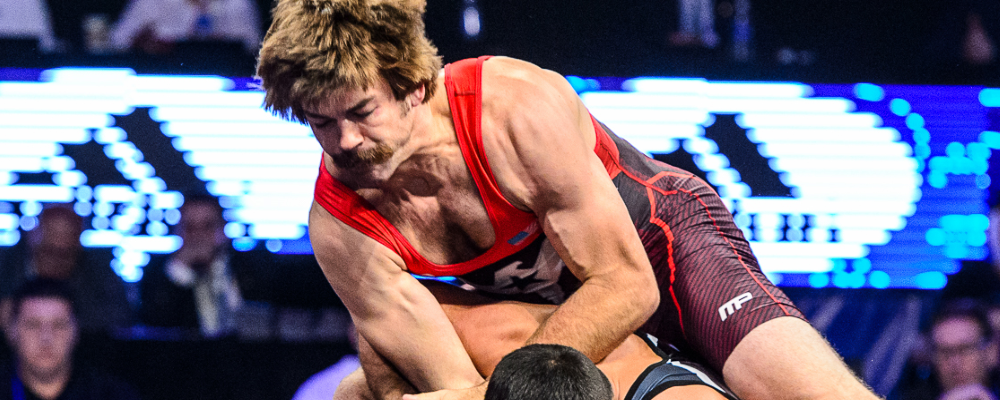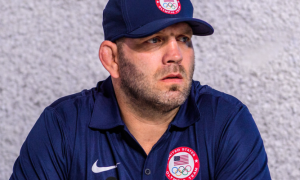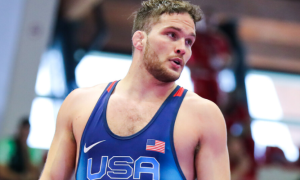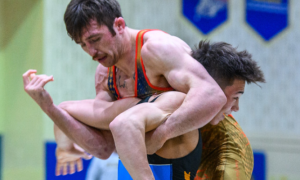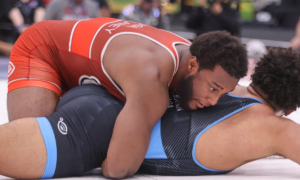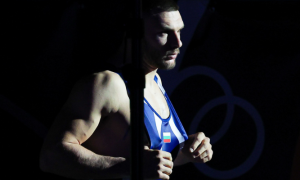Competition for the Greco Roman portion of the 2016 Olympics begins a month from today. A month. It is no longer way out in the distance somewhere, a time and a place carried off by the imagination’s tendency to warp perception. Particularly for the US Greco Roman squad, which as a unit has come to measure time by training camp duration. Well here it is, folks. The final phase of camp has already begun. Sunlight is beckoning its way through cracks in the tunnel.
The US Greco Olympians will be breaking camp and heading over to Rio on August 10th. That gives the athletes enough room to acclimate to both the time difference and the environment. Everything is going to be accounted for — heart-rates, hydration, weight-cutting concerns, and of course, those last couple of days of actual training. And while this perhaps seems like a lot for the average person, it’s isn’t to this group. Years and years of competitions and camps overseas have certainly calloused these wrestlers to the rigors of travel. This time around it might be different, but a good different. Even with all of the issues and unrest currently facing the Rio Games.
A Different Course of Measurement
What makes for interesting conversation is what the next month actually means for the Olympians. If you were to ask US National Team head coach Matt Lindland, apparently a lot. In an era when athletes have a host of technologically-advanced resources at their disposal, Lindland himself has involved key mechanisms to help calculate training cycles. The usage of heart-rate monitors, introduced to the program in large part by 2016 volunteer Olympic coach Mark Halvorson, has played an important role. “We’re still just breaking into it really, but we’re using it a lot,” Lindland says. “In the past, I think we were just using it for specific stuff but now we’re incorporating it into all of our training.” Clocks inside of the wrestling room at the Olympic Training Center do not necessarily determine when the team begins and ends activities. Instead, they aim for a pulse range that is conducive to getting the most out of their time on the mat.
“We’re actually being able to adjust the training specifically for each athlete because you could say, We’re going to recover 30 seconds or 40 seconds, but maybe at 30 seconds Robby’s (Smith) heart rate doesn’t drop as much as Andy’s (Bisek),” explains Lindland. “So now we’re able to say, Okay, when your heart rate gets down to 130 we’re going to hit our second set. When your heart rate gets down to 130, we’re going to hit our third set. We’re going to use that to individualize training a lot more than just saying, Okay, let’s guess we’re all going to get down to 30 seconds or 40 seconds.” It’s a whole new method of preparation and one that is geared towards attaining peak performance. That way, there is no plateau. Not with the wrestlers’ conditioning levels or their attitudes.
Training Partner Assimilation
Another aspect to all of this is the importance of training partners. Surely, there is a level of familiarity with the process of a fixed group being around to help others prepare for a competition they themselves will not be entering. There are World Teams each year, after all. But the Olympics are THE OLYMPICS. You don’t quantify this event quite the same way. The month before wrestling begins requires a careful yet systematic approach when it comes to the roles of the training partners. Comfort is vital. RaVaughn Perkins, who himself won the 2016 Olympic Team Trials, is poised to serve in this capacity for 59 kg representative Jesse Thielke. The two are close friends off the mat, but seem to feed off each other on it. “I know what he can do and I’m going to be there every step of the way and push him to get him to his full potential,” Perkins confirmed.
Comfort is important but again, so is maintaining expectation. Wrestling training partners are assuredly a selfless bunch. In a sport which functions as the ultimate exercise in one-on-one competition and in an environment where a singular purpose is often defined, those called upon in supporting roles enjoy a hefty responsibility. Iron sharpens iron. Everyone gets that. But there comes a point during the lead-up where the iron is as sharpened as it is going to get. Pushing past that line within a month of the Olympics necessitates that all involved be on the same page. Lindland, as the overseer of the program, understands this fully. “The training partners that we are bringing in, their only role is to support the guy who is on the Olympic Team.” Under that umbrella resides specific technical instructions as well as operating within the specialized, tech-savvy framework practices are conducted in.
It all underscores that we are in the midst of a crucial time. This month will come to pass. The four US Greco Olympians (Thielke, Andy Bisek, Ben Provisor, and Robby Smith) will be packing their bags, texting back well-wishers, and hopping on a flight to see all of this through. From a more obtuse perspective, you could say that this journey began months and months ago or even years and years ago. You wouldn’t be wrong in either case. But it’s these four weeks and three days, the next 744 hours, which may be looked upon as the final launching pad. This is when it is all supposed to come together. First it was was Concord. Then Azerbaijan. Now it’s home in Colorado Springs. Seems to have happened pretty fast, right?
Let’s see just how fast it feels a month from now.

Notice: Trying to get property 'term_id' of non-object in /home/fivepointwp/webapps/fivepointwp/wp-content/themes/flex-mag/functions.php on line 999

